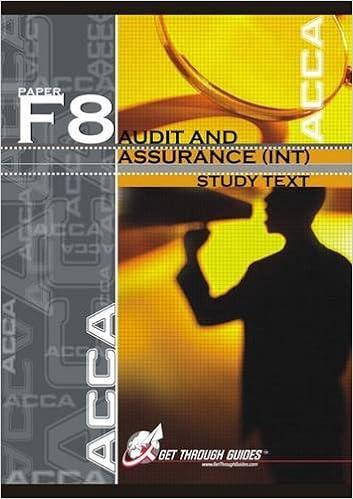Question
Question 3 The following inventory transactions took place for Sandhill Ltd. for the year ended December 31, 2020: Date Event Quantity Cost/ Selling Price Jan
Question 3
The following inventory transactions took place for Sandhill Ltd. for the year ended December 31, 2020:
| Date |
| Event |
| Quantity |
| Cost/ Selling Price | ||
| Jan 1 |
| opening inventory |
| 19,920 |
| $41.15 | ||
| Jan 5 |
| sale |
| 5,860 |
| 72.50 | ||
| Feb 15 |
| purchase |
| 34,760 |
| 40.75 | ||
| Mar 10 |
| purchase |
| 10,260 |
| 48.50 | ||
| May 20 |
| sale |
| 42,000 |
| 72.50 | ||
| Aug 22 |
| purchase |
| 15,000 |
| 47.00 | ||
| Sep 12 |
| sale |
| 20,300 |
| 72.50 | ||
| Nov 24 |
| purchase |
| 9,300 |
| 47.60 | ||
| Dec 5 |
| sale |
| 16,000 |
| 72.50 | ||
Calculate the ending inventory balance for Sandhill Ltd., assuming the company uses a perpetual inventory system and the moving-average cost formula. Also calculate the per-unit cost of the last item sold. (Round unit costs to 2 decimal places, e.g. 52.75 and ending inventory to 0 decimal places, e.g. 5,275.)
| Ending inventory |
| $ ???
|
| Unit cost of the last item sold |
| $ ???
|
Step by Step Solution
There are 3 Steps involved in it
Step: 1

Get Instant Access to Expert-Tailored Solutions
See step-by-step solutions with expert insights and AI powered tools for academic success
Step: 2

Step: 3

Ace Your Homework with AI
Get the answers you need in no time with our AI-driven, step-by-step assistance
Get Started




